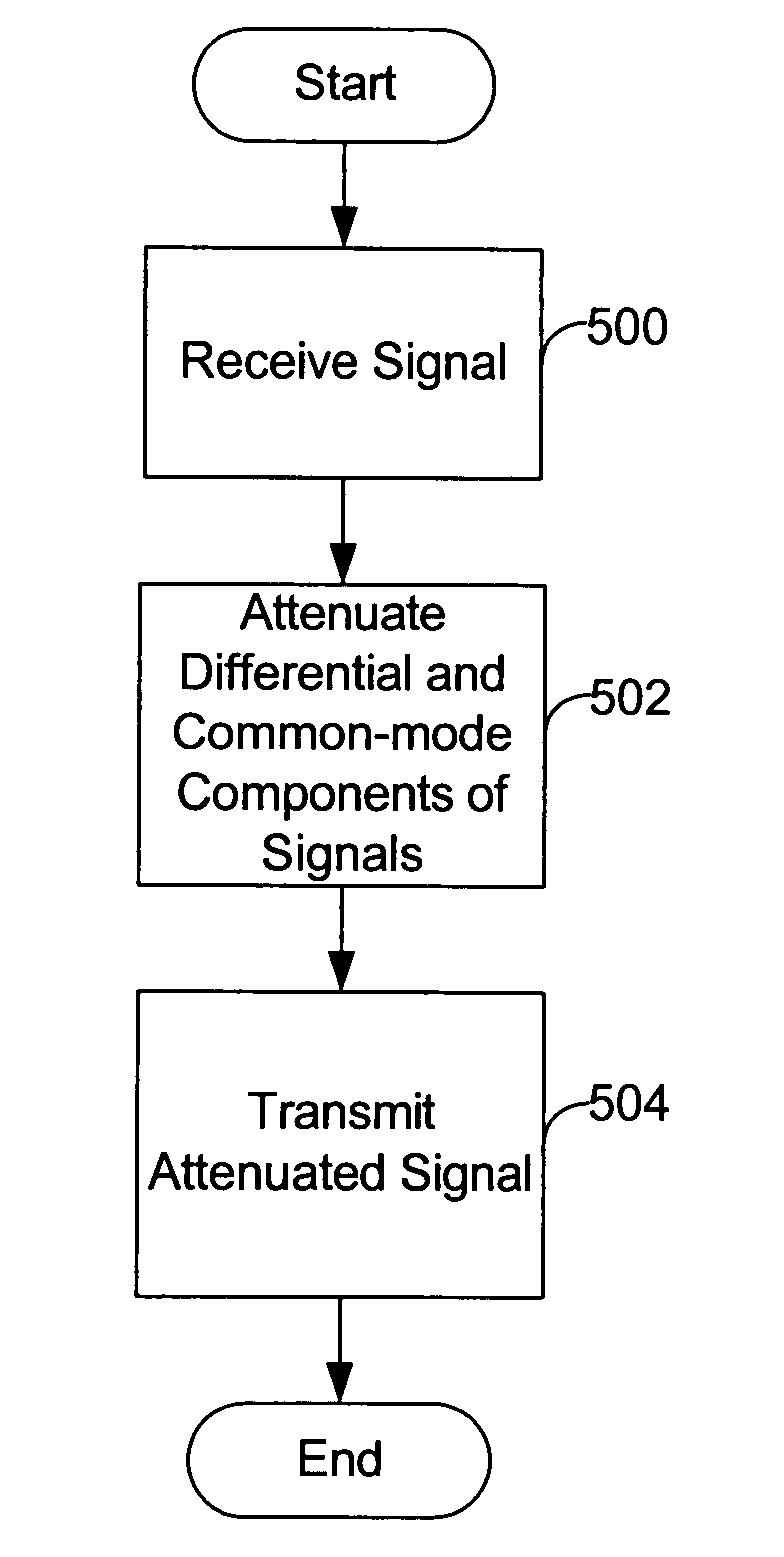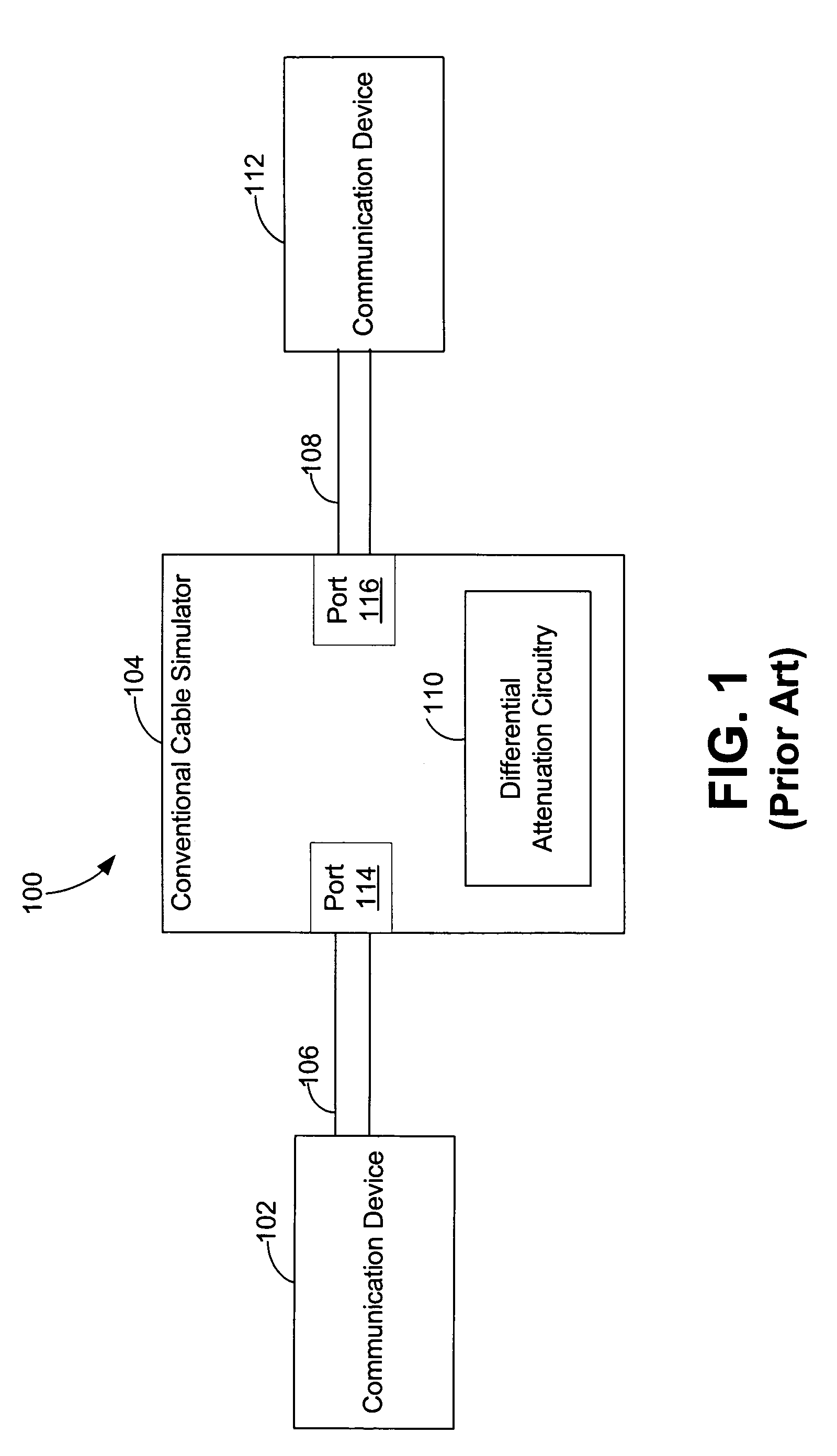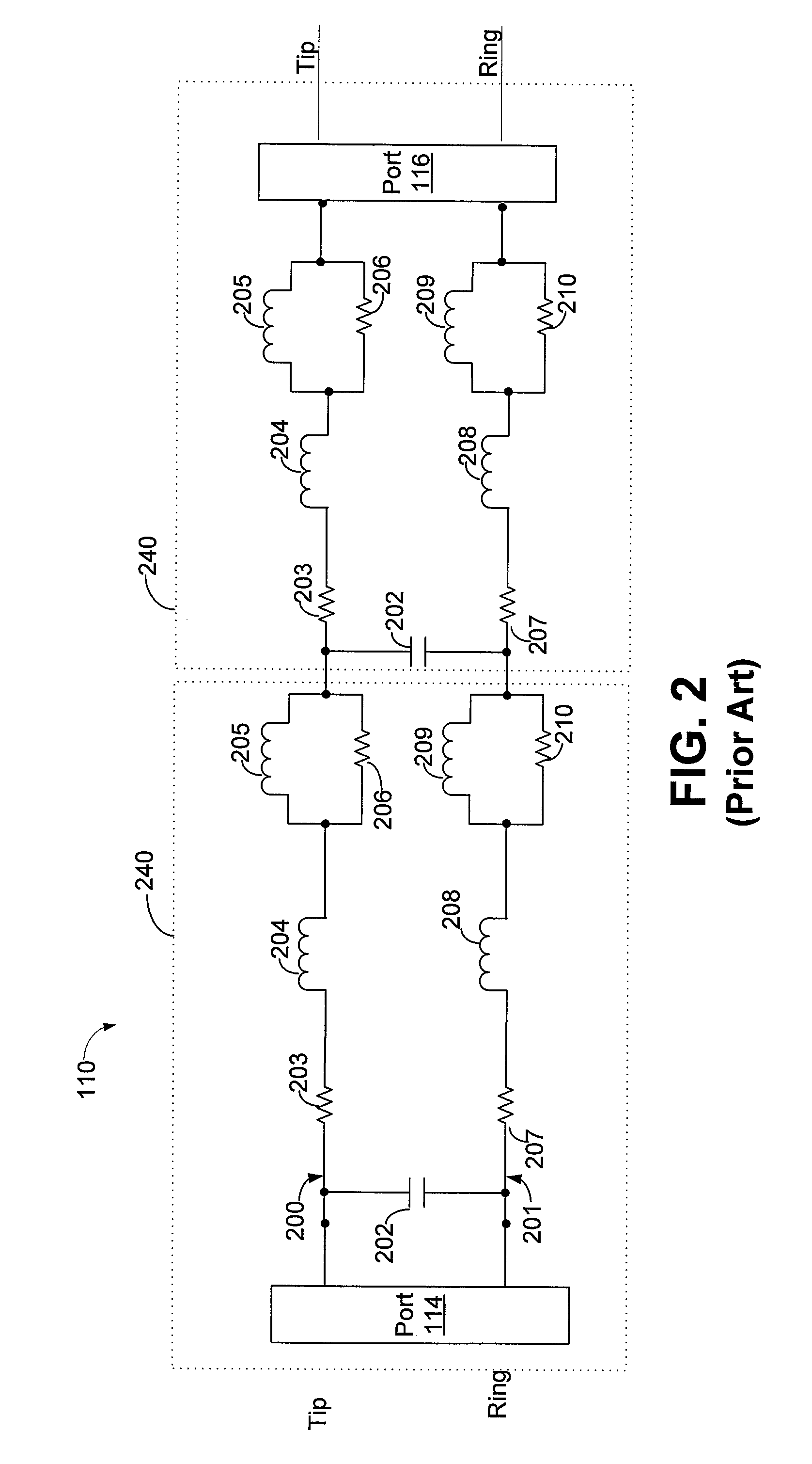Cable simulation device and method
a simulation device and cable technology, applied in the direction of instrumentation, program control, line-transmission details, etc., can solve the problems of limiting the simulation of only differential mode attenuation in the simulation of cable devices, and not always feasible to connect two communication devices together using actual transmission lines at actual lengths for testing purposes
- Summary
- Abstract
- Description
- Claims
- Application Information
AI Technical Summary
Benefits of technology
Problems solved by technology
Method used
Image
Examples
Embodiment Construction
[0016]Embodiments of the present disclosure generally pertain to a cable simulator for simulating a transmission line. In simulating the transmission line, the simulator simulates attenuation of both differential-mode and common-mode components present in a signal passing through the cable simulator.
[0017]FIG. 1 depicts a communication system 100 that utilizes a conventional cable simulator 104 having only differential attenuation. The system 100 comprises a cable simulator 104 that connects a first communication device 102 at a first port 114 to a second communication device 112 at a second port 116. Cable 106, typically a length of several feet, connects communication device 102 to the cable simulator 104 at port 114, and cable 108 connects communication device 112 to the cable simulator 104 at port 116. The cable simulator 104 further comprises differential attenuation circuitry 110 that provides differential attenuation to the signal communicated between devices 102 and 112.
[001...
PUM
 Login to View More
Login to View More Abstract
Description
Claims
Application Information
 Login to View More
Login to View More - R&D
- Intellectual Property
- Life Sciences
- Materials
- Tech Scout
- Unparalleled Data Quality
- Higher Quality Content
- 60% Fewer Hallucinations
Browse by: Latest US Patents, China's latest patents, Technical Efficacy Thesaurus, Application Domain, Technology Topic, Popular Technical Reports.
© 2025 PatSnap. All rights reserved.Legal|Privacy policy|Modern Slavery Act Transparency Statement|Sitemap|About US| Contact US: help@patsnap.com



